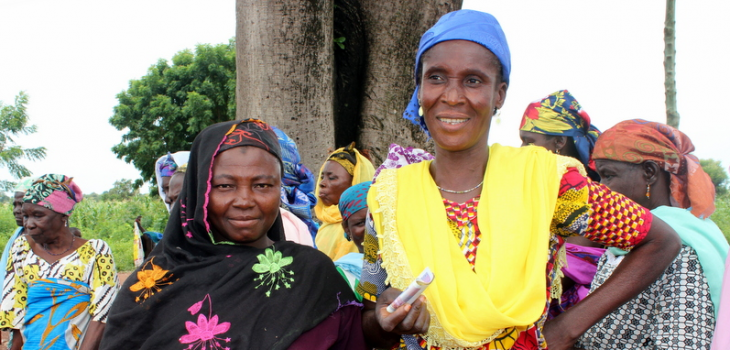This blog has been cross-posted with kind permission from the London School of Hygiene & Tropical Medicine (LSHTM).
We’ve all heard the statistics—intimate partner violence (IPV) is one of the most pervasive forms of violence globally: one in every three women aged 15 years and over is estimated to experience physical and/or sexual violence by a partner in her lifetime. IPV has devastating impacts, on women and children’s health and welfare, ranging from poor mental health to sexual and reproductive health problems, with severe cases resulting in intimate partner homicide.
However, significant advances have been made in the prevention of IPV in the last 20 years -we now know that violence is preventable. Yet most proven interventions in low- and middle income countries (LMICs), including community-mobilization or efforts to strengthen relationship skills, are challenging to deliver at scale.
While most violence interventions focus on disrupting harmful gender norms where violence is rooted—other factors contribute to and exacerbate the problem. One is poverty. About 10 years ago, researchers noticed that cash transfers (CTs) – a direct provision of cash to households – resulted in measurable decreases in IPV. Social safety nets, including CTs are primarily focused on reducing poverty and vulnerability, and there is a robust body of research showing they achieve their main goals. In addition, as these social safety nets reach billions of recipients globally—they offer a compelling platform for intervention at scale.
But how promising are CTs in reducing IPV, and what behavioural dynamics underlie this relationship?
To answer these questions we reviewed rigorous studies linking CT to IPV in LMICs. Our results, published today in the World Bank Research Observer are compelling. Out of 14 quantitative and 8 qualitative studies included in the review, 11 (or 79%) and 5 (or 63%) demonstrated reductions in IPV. The evidence was stronger for physical and sexual IPV, and less conclusive for other types of violence, such as emotional or psychological violence. Further, impacts were not trivial; in many cases reductions were large, representing 30% decreases or more which is comparable to those found in IPV specific interventions.
So how does cash affect behaviour and experiences of IPV?
Our study identified three main mechanisms through which CTs can affect IPV- poverty reduction, conflict resolution and women’s empowerment.
In household’s receiving cash, poverty-related stress is immediately alleviated and income constraints are reduced – which leads to improved emotional wellbeing and fewer triggers for violence. Additionally, increased access to cash, particularly in very poor households, can lessen conflict by reducing arguments over tight budgets and daily money needed to run the household. Finally, cash and complementary interventions (particularly if targeted to women) have the potential to increase female decision making social networks and knowledge, strengthen self-worth, and increase a woman’s value to her partner and the household. Empowered women are less likely to tolerate or experience abuse from partners.
However, the impact of CTs on IPV may not always be beneficial. For example, if CT funds are used for expenditures not intended to benefit all household members, such as the purchase of alcohol or tobacco, cash could create new sources of marital conflict. It is also possible that men respond negatively to women’s gains in resources or power and attempt to use violence to reassert their authority. We found little evidence of these adverse occurrences, nonetheless, we cannot rule out the possibility of them occurring under diverse programme designs and contexts.
So what are the next steps?
Although we have found evidence that supports CTs reducing IPV, we know less about whether they also reduce the severity or frequency of IPV, if they encourage help-seeking or reduce other types of family violence—including violence against children, and the role of complementary programmes such as nutrition training or linkages to health services.
We also know little about whether the protective impacts of CTs continue after the programmes end, or how impacts accumulate over time, and have limited data from certain regions of the world, including South East Asia and the Middle East. Because gender norms underpin potential differences in impacts, testing interventions in different contexts must be a priority for future research.
Our work has generated conclusive evidence that CTs reduce IPV and a framework to guide testing of mechanisms in future studies. In order to leverage the impact of CTs, we need increased recognition of the power of cash to change intra-household dynamics and a commitment to investigating fine-tuned implementation questions.
We must leave no stone unturned in our journey towards a violence-free world.
About
This research was carried out by social epidemiologists from LSHTM and Johns Hopkins Bloomberg School of Public Health, and development economists from the UNICEF Office of Research–Innocenti and International Food Policy Research Institute.
Publication
Ana Maria Buller, Amber Peterman, Meghna Ranganathan, Alexandra Bleile, Melissa Hidrobo, Lori Heise. A Mixed-Method Review of Cash Transfers and Intimate Partner Violence in low- and Middle-Income Countries. The World Bank Research Observer. DOI: 10.1093/wbro/lky002
Image
Participants of the Government of Ghana’s Leap 1000 Programme which provides cash support and health insurance waivers to pregnant women and mothers of young children.
Credit: Michelle Mills / UNICEF Office of Research—Innocenti











